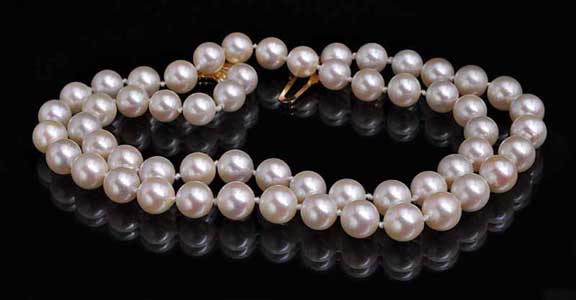The acid test: Preserving pearls' fragile beauty

By Elisabeth Strack Pearls have been admired and cherished since ancient times They were highly appreciated in Greek and Roman antiquity, and ever since, they have enjoyed a positive reputation as objects of adornment and value Kokichi Mikimoto’s vision that one day every woman should wear and own a pearl necklace has nearly come true Pearls are also fascinating jewellery objects—they distinguish themselves from most gemstones because they grow inside of molluscs and are therefore considered products of biomineralization.
This process involves an organic substance called conchioline, which is usually described as the ‘organic matrix.’ It is a protein of the keratin type that serves as a type of mortar for the calcite prisms and aragonite platelets of which the pearl is mainly composed. Most natural pearls have a rather large inner core made up of concentrically arranged calcite prisms This is followed by an outer layer of aragonite platelets in a similar . Source